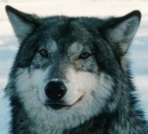"The "noyan breton". - If the Breton group must has kept, because his geographical situation (Finish terrae, Finistère) his language, culture and his pshicological particularities that the historians explains, that originality doesn't transpose itself, as with the Basques, in the anthropological domain. A recent survey, due to the laudable activity of P.R. Giot (1951), rejuvenates the data that we have on the Breton population and permits to bring some retouchings to the picture brushed by Vallois. We will pull some numbers of it. It is about a few 5.700 draftees of the departments of Finistère, Morbihan and the Côtes-du-Nord, examined in 1946-1947.
The average cephalic index of the Bretons is of 82; the Brachycephaly moderate of the" Breton core" is confirmed therefore. It is the department of Finistère that is the less brachycephalic (81,4), Morbihan giving a cephalic index of 82,9 (Côtes-du-Nord, 82,3). The group of the cantons where the size is also the lowest deal the indication of the more brachycephalyc (85,7), while the mesocephale index is more pronounced (79,1) at Brest. One can see how coincide on the whole the more brachycephalics with those with small sizes and the more mesocephalics with the highest sizes. Finistère is especially rich in cantons where the averages prove the existence of a strong core of high stature (168-169) with less cephalic index (79-81) (III card).

It is necessary to speak shortly about a local, near to the alpine race, who had the grant to excite the imaginations. It is about the Bigoudenns (inhabitants of Pont-L'Abbé, small port to the south of Quimper, in Finistère). Some people believe - and this belief is tenacious - a Mongolian origin to those Bretons, on the faith of their particular facies; as this typical face is actually only present at the women, it is a lot simpler to assign it, as the more serious anthropologists say (Vallois, Giot), the hairdressing (drawn behind) and to the “Coiffé à bandeau” gives to the cheekbones an aspect recalling the one of the Mongols. Giot, without believing in an Asian racial feature, doesn't exclude however "something" of genetic origin, a "localized variation, whose conservation can be encouraged by some prejudices that the relations and the miscellanies of the Bigoudenns would have slowed down with their neighbours ". (1949).
.


 Вход
Вход Зарегистрироваться
Зарегистрироваться




 Наверх
Наверх






